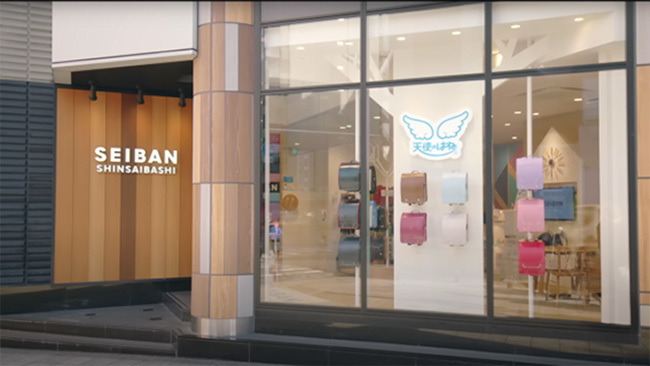Note: This website was automatically translated, so some terms or nuances may not be completely accurate.
What is the "DEI Perspective" Essential for Modern Advertising? Exploring the Future of Advertising Expression with Students
On July 8, 2025, Dentsu Inc. held a DEI Seminar & Workshop at its Kansai Office, inviting 32 students (34 people including professors) from the Moriko Seminar and Takashi Yamamoto Seminar in the Media Studies Program of the Faculty of Sociology at Kansai University.
The instructor was Creative Director Akira Masuyama from dentsu DEI innovations. Mr. Masuyama has extensive experience developing solutions in the DEI field. Beyond client projects involving LGBTQ+ and gender issues, he has also developed educational content and frequently serves as an instructor for training sessions and seminars.
The program was divided into two parts. Part One featured a lecture on DEI fundamentals and advertising case studies. Part Two examined an advertisement that had sparked discussion, using the DEI perspective learned in Part One to conduct an idea discussion on updating the ad. This article provides a digest of the lecture content and the idea discussion.

Essential DEI Basics to Remember
Mr. Masuyama began by explaining the meanings of the three core DEI concepts: Diversity, Equity, and Inclusion.
Diversity means "each person is a unique combination of race, religion, gender, sexual orientation, age, disability status, and other factors." Equity means "compensating for imbalances in social structures by providing the support each individual needs to perform effectively." Inclusion means "diverse people respecting each other, acknowledging each other's values and individuality, and coexisting."
Ms. Masuyama concisely expressed the meaning of each term, concluding that "DEI means that each person has their own norm, reasonable accommodations are provided, and no one is excluded."
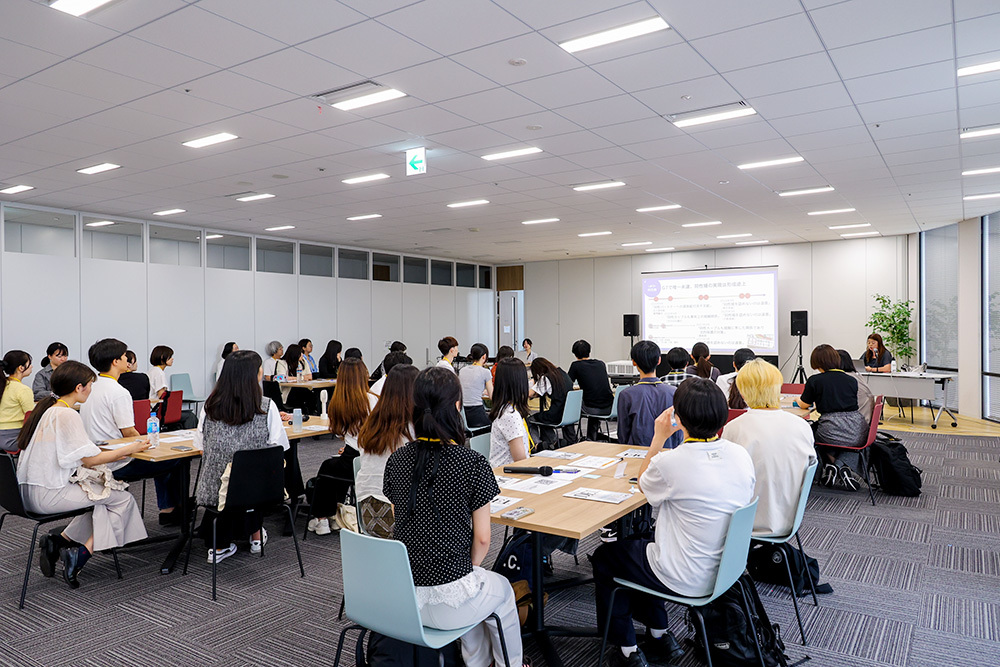
What are the four areas of DEI?
Next, Masuyama explained the four DEI domains supported by dentsu DEI innovations, detailing challenges within each: "Disability," "Gender," "Multiculturalism," and "Generation."
Regarding "Disability," he touched on the "social model of disability," which views disability not as an individual problem but as something created by societal structures and environments.
Regarding "Gender," he explained that considering gender identity involves four dimensions: "Sexual Orientation," "Gender Identity," "Sex Assigned at Birth," and "Gender Expression." He explained that combining "Sexual Orientation" and "Gender Identity" forms the acronym "SOGI," which is the internationally recognized term for "respecting everyone's gender identity as a human right."
Regarding "multiculturalism," the presentation touched on food diversity and "Easy Japanese." For "generation," it discussed well-being in Japan's low birthrate and super-aging society, as well as the young carer issue. It concluded by stating, "Societal and corporate challenges exist within the various combinations of the DEI domain."

Advertising Examples Addressing DEI
The topic shifted to "Advertising and DEI." She introduced advertising case studies examining standards of female beauty, gender analysis, family, and LGBTQ+. Regarding lookism, she referenced the 2020 petition campaign challenging complex-inducing ads and the social trend of sharing one's natural appeal, such as body positivity. Throughout the lecture, students listened intently with serious expressions and took diligent notes, leaving a strong impression.
The lecture concluded with students watching Seiban's " Backpack Selection Documentary," which garnered significant attention in 2023. This work, selected as a reference case by the Ministry of Children and Families for its natural portrayal of various challenges related to children and DEI, was viewed together with the students.
Updating Advertising from a DEI Perspective
Next was a student-led workshop. Students were given a pre-assignment: select one actual advertisement and update it to incorporate diversity. During the workshop, students divided into six groups. Beyond their pre-assignments, they exchanged ideas while keeping the DEI lecture content from Part 1 in mind. Discussions were lively and active. Afterwards, each group discussed how the expression and message potential could be expanded from a DEI perspective for their representative case. They presented update proposals aimed at creating more inclusive expressions that consider diverse audiences.

Group A focused on an advertisement related to caregiving. From a gender perspective, they examined how the current ad's depiction of caregivers as women might reinforce unconscious gender role stereotypes. They also noted how the fixed notion that children (especially daughters) should care for their parents could limit children's freedom of choice. They proposed shifting the copy's perspective from the parent's viewpoint to the child's.
Ms. Masuyama commented that the work encompassed complex issues: the perspective of care labor, gender concerns, and family dynamics. She praised the group for thoughtfully reframing the copy to make it personally relevant, calling it excellent.
Group B examined a cosmetic advertisement posted online. They discussed, from a diversity perspective, how the ad depicted the assumption that women bear the burden of housework and childcare, and how it could be interpreted as conveying the message that "women should always be beautiful." They proposed that expressions affirming only an interest in beauty could potentially exclude people with diverse values from an inclusion standpoint. They suggested incorporating expressions that respect individuality, such as "the habit of taking care of myself."
In response to the presentation, Ms. Masuyama commented, "As you pointed out, besides potentially alienating some women, there was an assumption that one should stay beautiful even when busy." She also noted there is room to consider the reasons for the gap between the brand's regular advertisements and its online ads.
Group C examined a project advertisement concerning menstruation. They considered how the ad's positive message could potentially be misinterpreted as implying "menstrual discomfort should be endured" or "one must always be positive," especially when underlying health issues could be masked by menstrual difficulties. They proposed revising the relevant expressions and updating the copy to affirm the option of not pushing oneself too hard.
Ms. Masuyama also noted the use of "we" as a collective term. She commented that the improvement plan was excellent because it incorporated the core message the ad originally intended to convey: that menstruation is inherently different for each individual.
Group D selected advertisements related to lookism. They discussed how, despite the intention to oppose lookism, such ads could inadvertently trigger insecurities or even negatively frame the desire to look beautiful. Considering the nature of advertising in high-visibility spaces, they acknowledged the risk that certain expressions could unintentionally heighten focus on appearance. They proposed changing the poster visuals to emphasize diversity and suggested copy along the lines of "Embrace your unique charm just as you are."
Ms. Masuyama commented, "They have thoroughly examined the methods and media selection to convey the message that everyone has their own charm and that natural cuteness should be cherished."
Group E addressed recruitment advertising. The discussion focused on whether the copy's expression could be unintentionally perceived as lookism and whether using only female models on the poster aligned with the message of seeking diverse talent. On the other hand, it also touched on the fact that this ad significantly increased the number of entries and that the intent was conveyed if readers looked at the body copy, mentioning the difficulty of advertising expression. An update proposal was presented to use diverse models and emphasize "your uniqueness" in the copy.
Ms. Masuyama commented, "It's true we can't deny the catchphrase alone could cause misunderstanding. It's crucial to craft the copy so the catchphrase grabs attention, then encourages people to read the body copy as well. While diverse people are featured on the actual website, it's also true that the poster alone doesn't easily convey that. This presentation made me realize again that elements prone to misunderstanding exist."
Group F selected an ad for unwanted hair removal. They analyzed that the stated purpose of "to be popular with girls" and the use of the term "etiquette" could feel like imposing specific values. They proposed copy centered on personal agency, such as "Transform smoothly into the person you want to be," which respects one's own intentions.
Ms. Masuyama also pointed out assumptions that the ads are based on cis-heterosexual relationships (where one's assigned sex at birth aligns with their gender identity, and they are heterosexual). She noted that the "should" mentality—that men must act a certain way to be attractive to women—permeates various areas of gender issues.
Finally, Professor Yamamoto also presented. He examined advertisements related to suicide prevention. He raised the possibility that, contrary to actual data showing more men than women die by suicide (*), using female models reflects the creators' subjective image. He also touched on the high barrier of scanning a QR code in a public space like a train station, suggesting there might be alternative possibilities for media selection and expression methods to truly reach the people who need this message.
※Reference: "Suicide Situation in 2024" by the Suicide Prevention Promotion Office, Ministry of Health, Labour and Welfare; and the Community Safety Planning Division, Community Safety Bureau, National Police Agency.
Mr. Masuyama stated, "Learning about this ad made me think. Beyond station posters, could websites or mobile sites also be considered as media?" He also mentioned that the casting could be reconsidered, such as featuring one man and one woman, or including people of different ages.
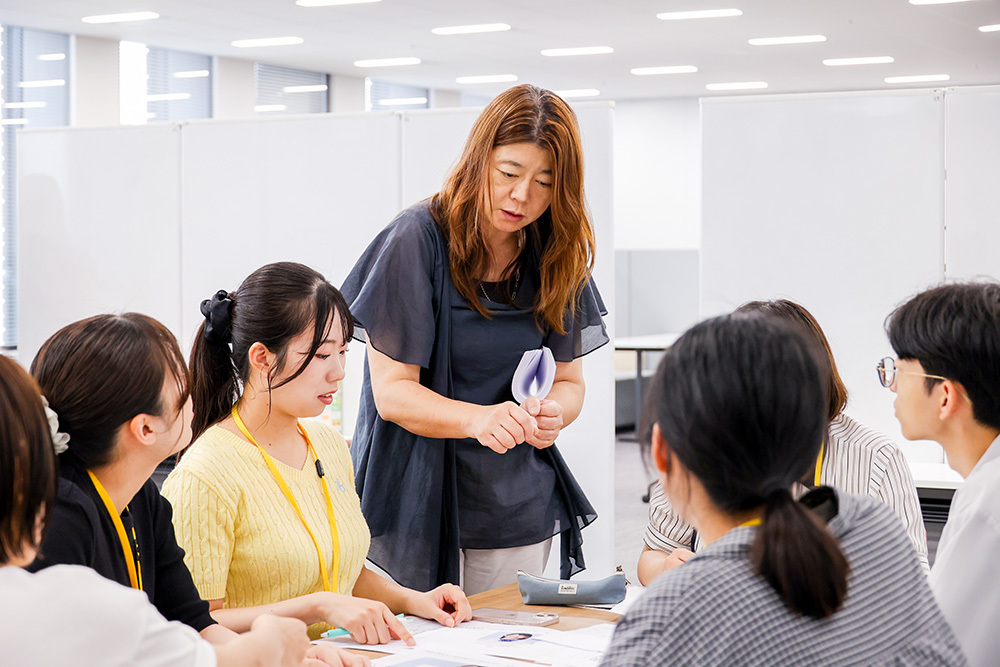
Students deepened their understanding, while Dentsu Inc. employees gained new perspectives
In a post-program survey, 100% of respondents reported satisfaction (very satisfied + satisfied) with the content. Before the seminar, many students admitted they "didn't really understand DEI" or "were interested but lacked confidence." Afterward, the majority reported their "perspective broadened and understanding deepened" or their "interest intensified," indicating a dramatic shift.
Students shared feedback such as: "I thought I understood diversity, equity, and inclusion, but realized I hadn't truly grasped their meaning myself," and "I had researched the term DEI, but learning the specific meanings of each concept and their relationships significantly deepened my understanding. Understanding the terms also allowed me to consider real-world examples from a broader perspective, identifying issues and improvement methods—it was very interesting."
Professor Mori mentioned plans for follow-up activities, such as having each student write a report after the lecture. During a post-lecture reflection session, Professor Yamamoto reportedly told students: "For those involved in expression, concepts like DEI might seem troublesome at first glance. However, this knowledge expands the field of thought and expression in ways you may not have noticed before."
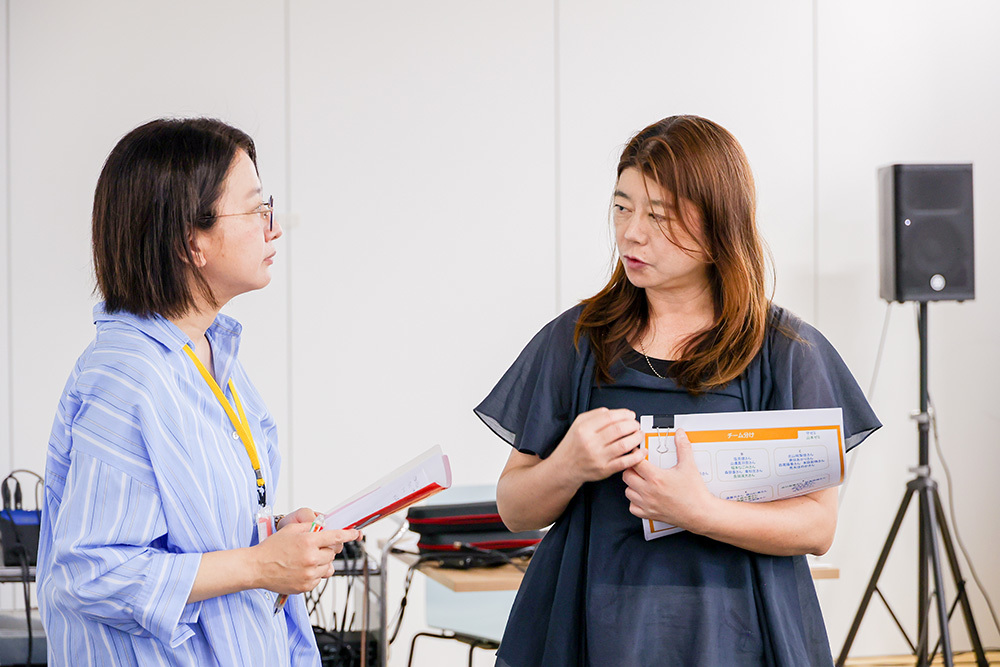
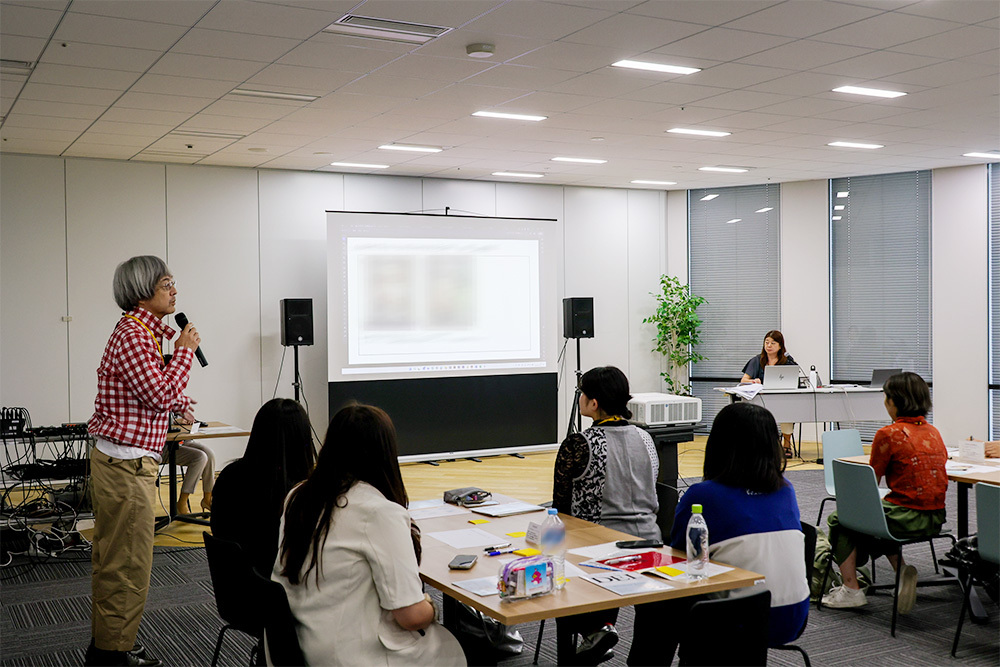
The fresh perspectives and opinions of the enthusiastic students provided many new insights for the participating lecturers and Dentsu Inc. employees alike, making it a meaningful and educational time for both students and Dentsu Inc.

Was this article helpful?
Newsletter registration is here
We select and publish important news every day
For inquiries about this article
Author

Akira Masuyama
Dentsu Inc.
Marketing Division 6
Creative Director
dentsu DEI innovations<br> As a Creative Director, has managed over 50 clients, primarily national accounts. Has received numerous domestic and international advertising awards in creative, media, and digital categories. Has served as a judge for various awards. Engages in identifying challenges and developing solutions based on diverse creative experience spanning mass media, digital, promotions, and social media, combined with specialized expertise as a DEI consultant. At dentsu DEI innovations (formerly Dentsu Inc. Diversity Lab), I address various diversity issues, including LGBTQ+ and others, with extensive experience as a seminar lecturer and workshop facilitator. Also involved in consulting on gender expression and universal design (UD) methodologies. Diversity Attendant and Dentsu Inc. Team SDGs Consultant. Author and co-author of five-volume children's book series: "LGBTQ+: What We All Want to Know" (2022, Bunken Publishing), "Diversity: What We All Want to Know" (2023, same publisher), and "Biodiversity: What We All Want to Know" (2024, same publisher).
